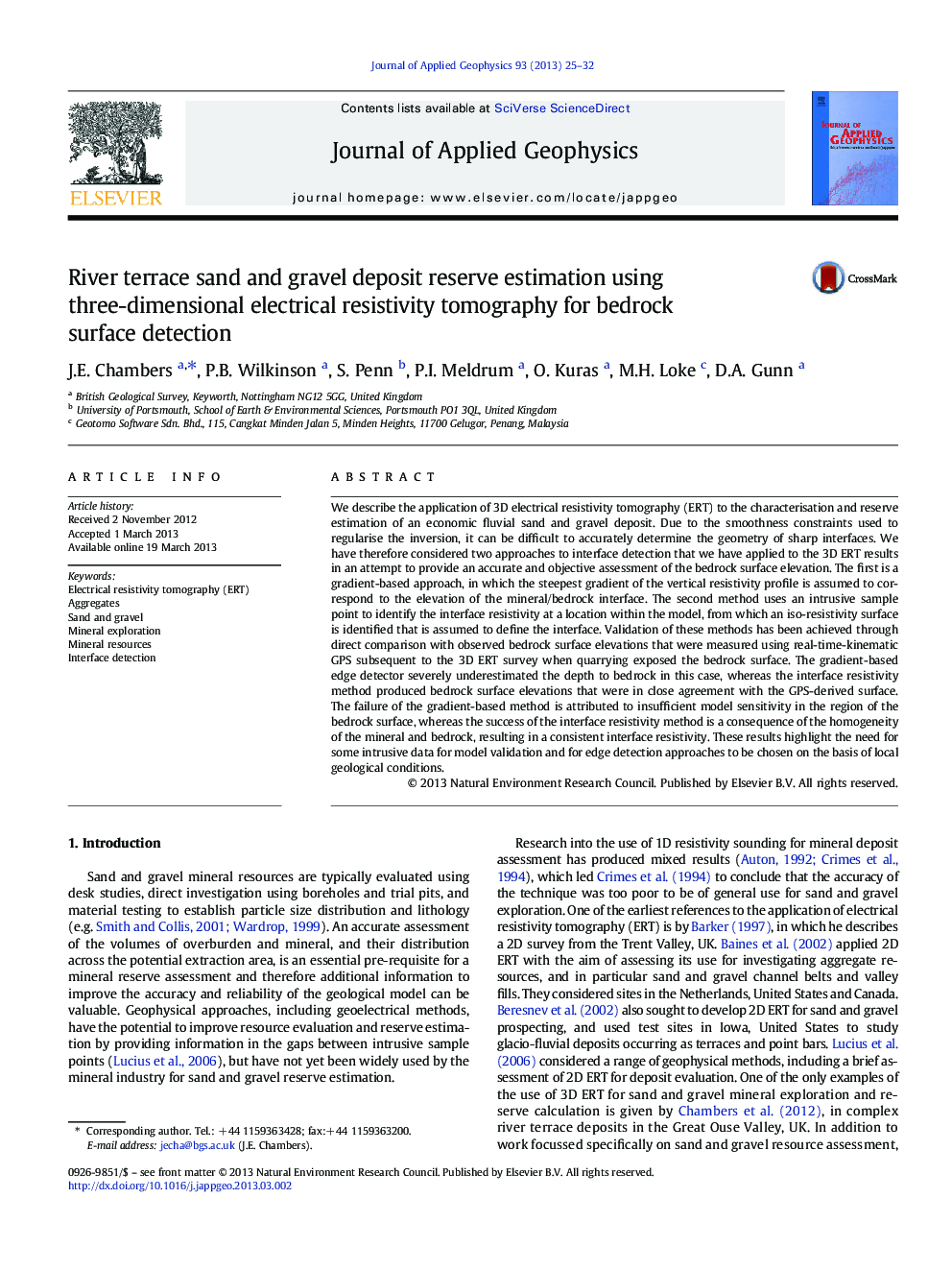| کد مقاله | کد نشریه | سال انتشار | مقاله انگلیسی | نسخه تمام متن |
|---|---|---|---|---|
| 4740329 | 1641158 | 2013 | 8 صفحه PDF | دانلود رایگان |
• 3D ERT is explored as a tool for mineral reserve assessment.
• Edge detection algorithms identified bedrock surface depths from ERT images.
• Direct observation of the bedrock surface post quarrying validated the ERT results.
• An accurate determination of reserve volume was achieved using 3D ERT.
We describe the application of 3D electrical resistivity tomography (ERT) to the characterisation and reserve estimation of an economic fluvial sand and gravel deposit. Due to the smoothness constraints used to regularise the inversion, it can be difficult to accurately determine the geometry of sharp interfaces. We have therefore considered two approaches to interface detection that we have applied to the 3D ERT results in an attempt to provide an accurate and objective assessment of the bedrock surface elevation. The first is a gradient-based approach, in which the steepest gradient of the vertical resistivity profile is assumed to correspond to the elevation of the mineral/bedrock interface. The second method uses an intrusive sample point to identify the interface resistivity at a location within the model, from which an iso-resistivity surface is identified that is assumed to define the interface. Validation of these methods has been achieved through direct comparison with observed bedrock surface elevations that were measured using real-time-kinematic GPS subsequent to the 3D ERT survey when quarrying exposed the bedrock surface. The gradient-based edge detector severely underestimated the depth to bedrock in this case, whereas the interface resistivity method produced bedrock surface elevations that were in close agreement with the GPS-derived surface. The failure of the gradient-based method is attributed to insufficient model sensitivity in the region of the bedrock surface, whereas the success of the interface resistivity method is a consequence of the homogeneity of the mineral and bedrock, resulting in a consistent interface resistivity. These results highlight the need for some intrusive data for model validation and for edge detection approaches to be chosen on the basis of local geological conditions.
Journal: Journal of Applied Geophysics - Volume 93, June 2013, Pages 25–32
